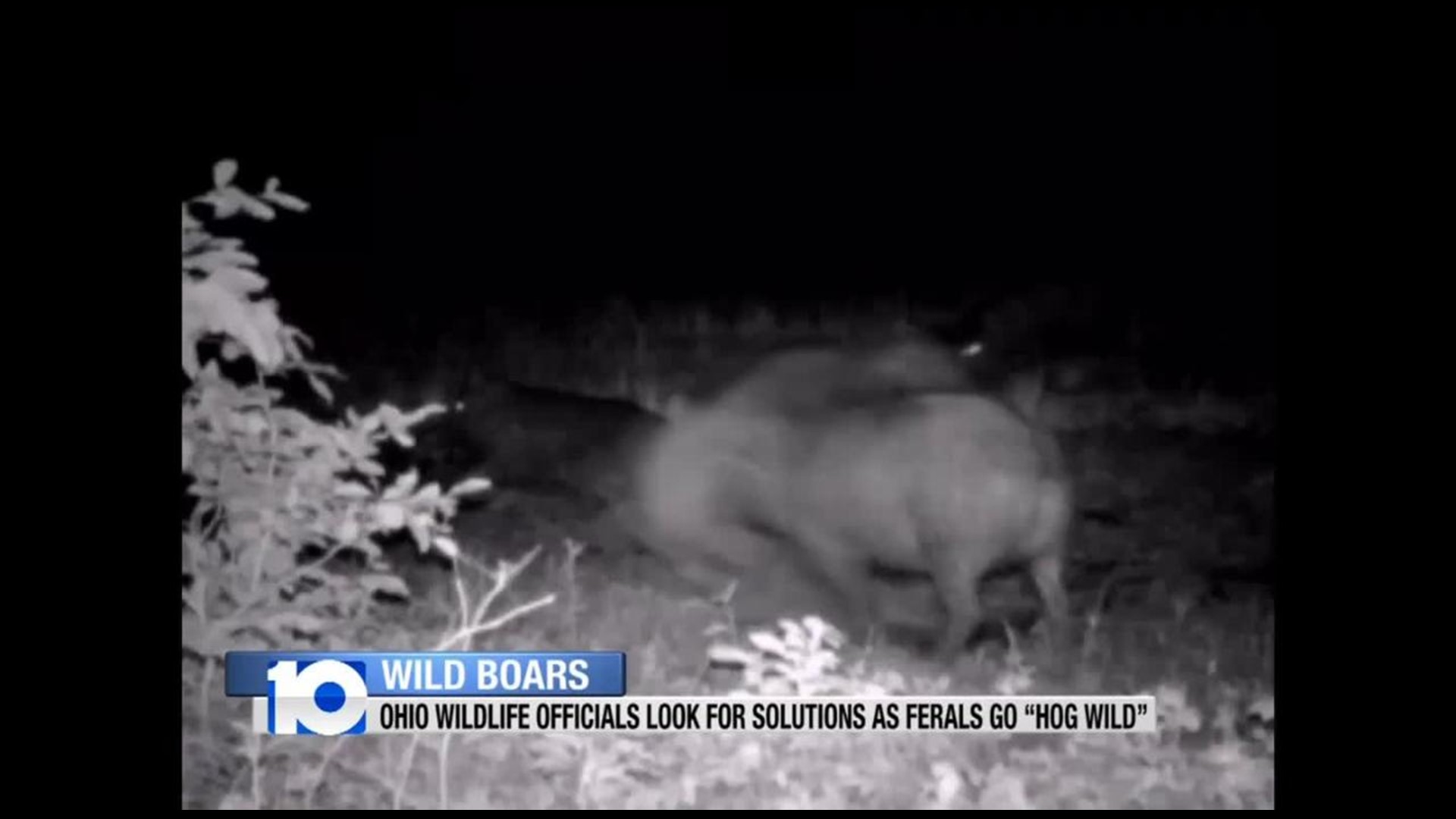They are known as wild boars, wild pigs and even razorbacks in some parts of the country.
However you want to label them, feral swine are a growing problem in Ohio according to state wildlife officials.
The USDA Wildlife Services office says feral swine in Ohio are still mostly located in the southern and southeastern portions of the state, but they have made their presence known all across the Buckeye State through a variety of ways.
"They arrived primarily through domestic escape, escape from hunting preserves and intentional release which is illegal,” said Craig Hicks, a wildlife disease biologist and Ohio’s feral swine coordinator for the USDA Wildlife Services.
Hicks says it is difficult to estimate how many feral swine are currently in the state.
"When we look at white-tailed deer or turkey, there is mandatory harvest reporting,” he said. ”With the feral swine, there is no harvest report so we have no idea how many are being taken. It's a guess."
The animals are known to damage crops, destroy properties and carry disease.
"They do a lot of rooting and tearing up of stuff,” said Chillicothe resident Michael Jordan.
Jordan enjoys hiking in the woods of Ross County and says he has observed signs of wild boars while hunting mushrooms.
His biggest worry is catching a disease.
"I'm sure the ticks get on the swine and fall off and stuff like that and get on us and bite us and we end up getting what they had. It's a big concern,” Jordan said.
Hicks says the feral swine pose a health risk to both animals and humans.
"Feral swine are capable of carrying up to 30 significant diseases and 37 parasites that can affect people, pet, livestock and wildlife,” he said.
Hicks and a team of technicians try to bait them into traps using a mixture of corn, yeast, sugar and water.
He says they currently have five traps that they rotate around the state based on where they have seen evidence of the animals.
They use a network of about 25 trail cameras to record the feral swine and have plans to add about 20 more cameras in the coming weeks.
"Our number of reports and reported sightings of damage that we're getting this year and every year over the last few years has increased," Hicks said.
In addition to being non-native and highly destructive, the feral swine reproduce quickly according to Hicks.
“They are highly re-productive with about 6 piglets per litter in Ohio with the ability to reproduce every 8 months,” he said. "You can see the exponential growth that is there."
But with a bigger investment in manpower and technology to combat the problem, Hicks is hopeful his team will make a difference.
"Our goal is to protect agriculture and those resources that we have."
Hicks encourages farmers and land owners who are experiencing problems with feral swine, to contact USDA Wildlife Services at 1-866-4-USDA-WS (1-866-487-3297).

